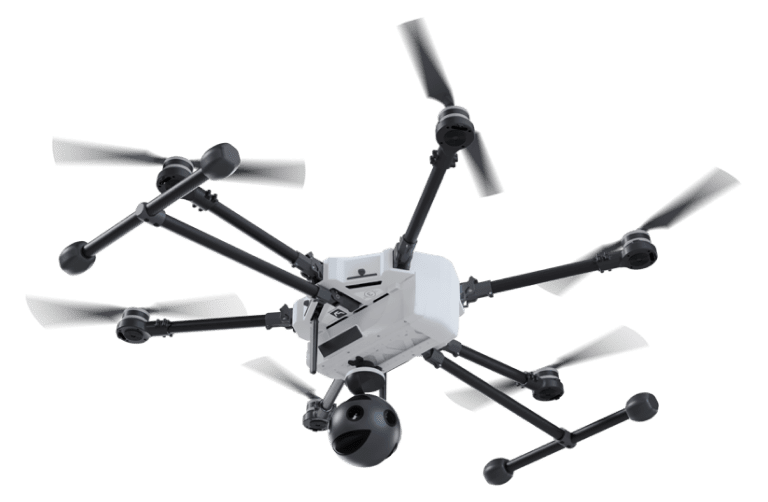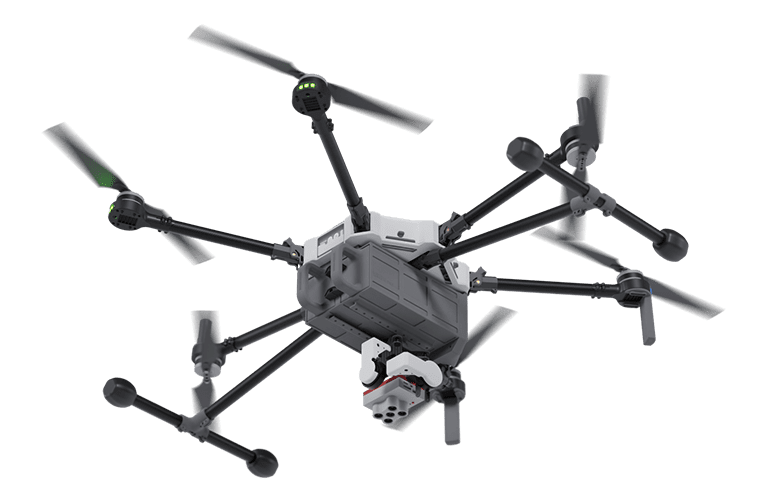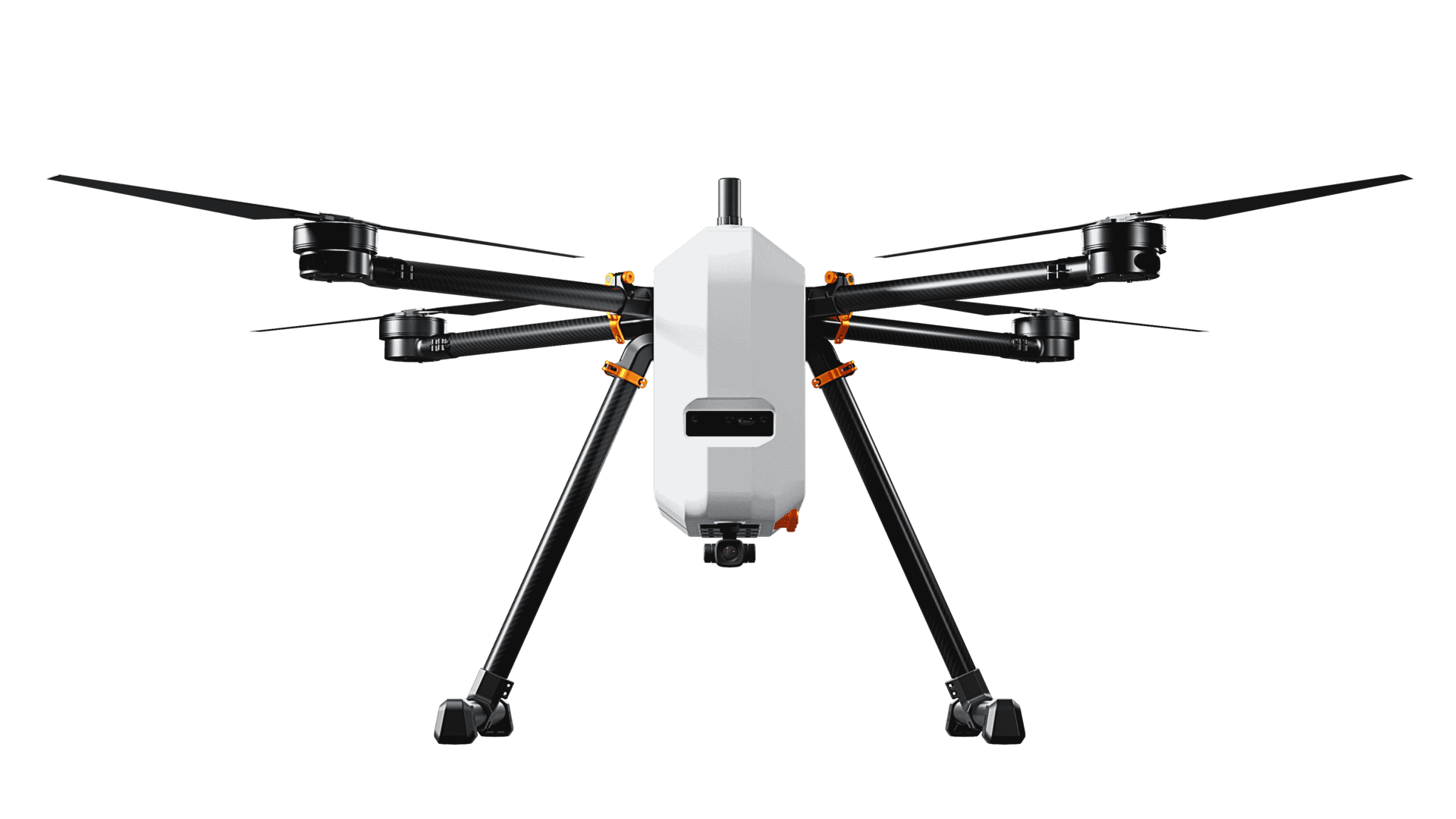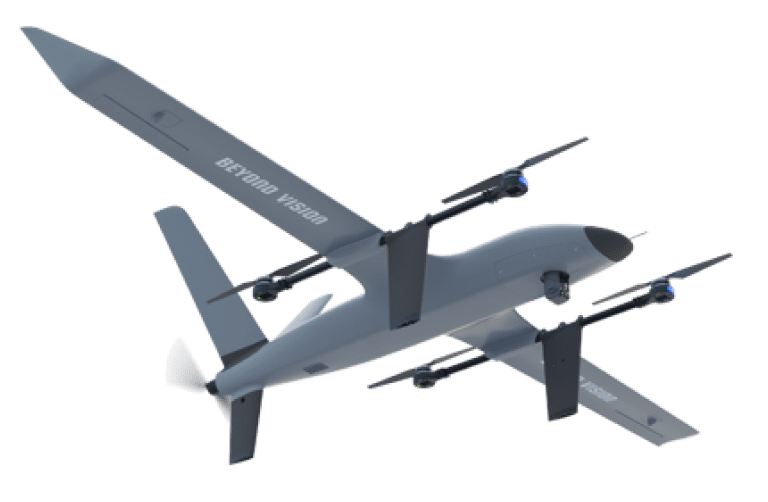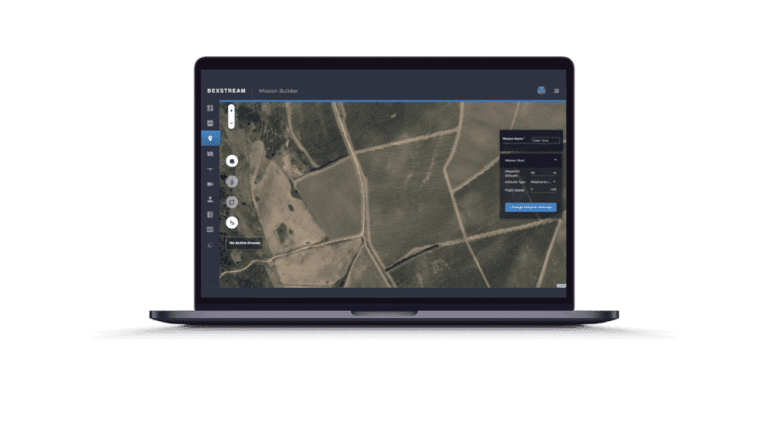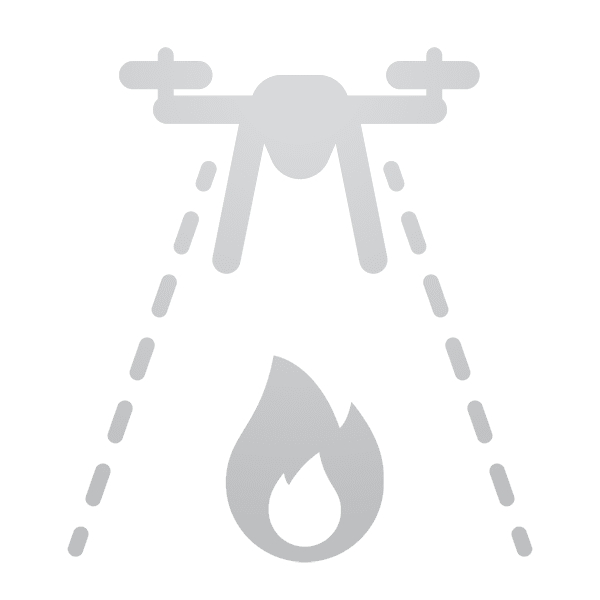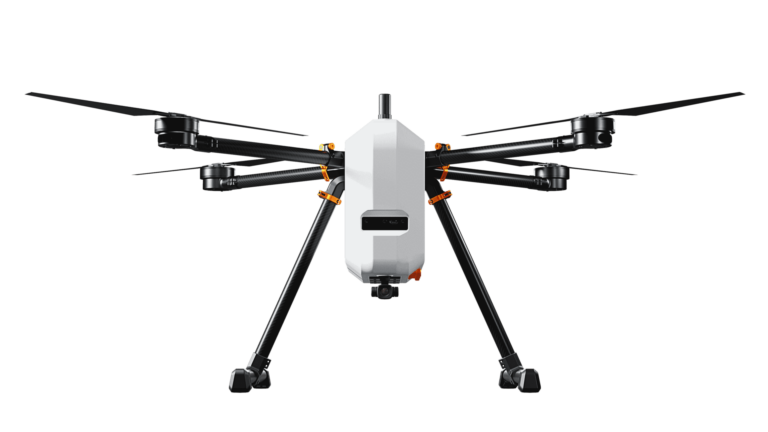Index
For a full overview of HEDI and the OPEX campaign, including objectives and structure, read our Operational Experimentation Campaign project page here.
Low-Cost Attritable UAS: Beyond Vision’s role at OPEX 2025
As part of this category, Beyond Vision will deploy its next-generation drone technology in live operational scenarios, where endurance, payload capacity, and autonomy will be put to the test under military-grade standards.

BVQ418 is a fully electric, Class 3 multirotor UAV with a payload capacity of 7 kg and a flight time of up to 90 minutes. Its key strengths include autonomous navigation powered by AI and modular payload integration, supporting logistics cargo, sensors, and real-time monitoring.
The VTOne, Beyond Vision’s electric VTOL fixed-wing platform, extends operational reach even further. With a 300 km range and 2 kg payload capacity, it is ideal for long-distance delivery and ISR missions. Both systems are integrated into beXStream, our cloud-based asset management and command platform that supports mission planning, live telemetry, and secure communications.
All systems, including key payloads like LiDAR and transportation boxes, are at TRL 7–9, indicating a high level of technological maturity. Previous deployments with both civilian and military partners have demonstrated their readiness for the kind of complex, multi-domain scenarios OPEX 2025 aims to simulate.
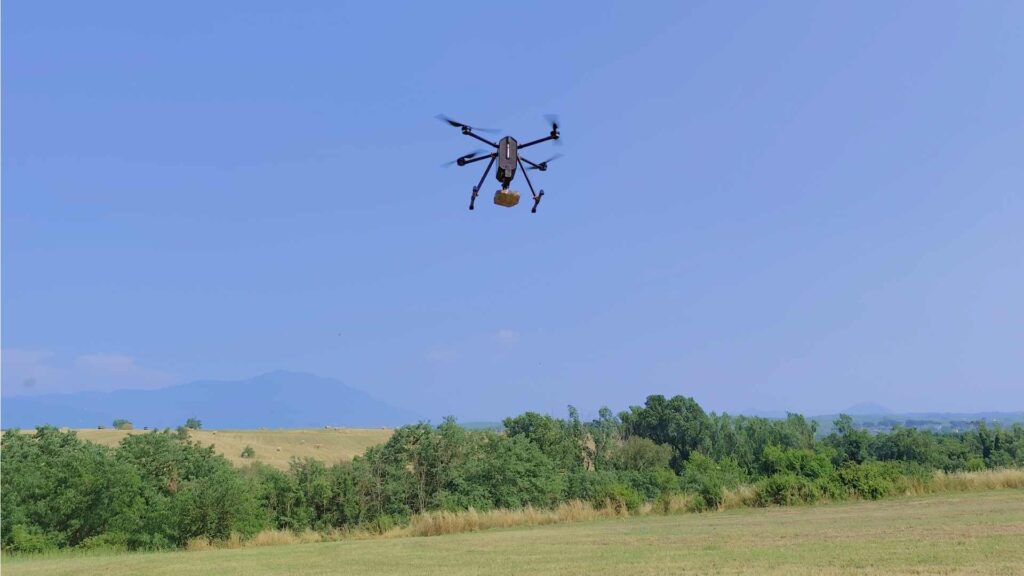
Why Beyond Vision?
Our selection for this campaign reflects our reputation as a trusted developer of mission-ready UAVs, known for their reliability, modularity, and seamless interoperability with command-and-control platforms such as ATAK. Our proprietary platform, beXStream, adds an intelligent layer to our systems by enabling secure mission management, autonomous coordination, and live data sharing.
The project is led by Dário Pedro, Beyond Vision’s CEO and an expert in AI and image processing for UAV applications. Dário holds a PhD in Artificial Intelligence and brings academic, technical, and strategic leadership to the team. Duarte Alemão, our R&D Project Manager, holds a PhD in robotics and smart manufacturing and has led EU-funded innovation efforts in autonomous systems. UAV operations are supported by Pedro Santos, a seasoned UAS pilot with experience in the Portuguese Navy and Air Force, and a wide range of military logistics missions. Our drone software and hardware specialists — Duarte Correia, João Mendes and Rodrigo Carvalho — bring additional strength in systems integration, ROS-based control, and signal processing.
This team combines cutting-edge engineering with practical deployment experience — a vital combination for successful real-world experimentation under the OPEX campaign.
Together, this team represents a unique blend of academic excellence, field experience, and technical innovation, ensuring Beyond Vision’s contribution to the OPEX campaign is not only capable but visionary.
Expected Outcomes for OPEX 2025
- Validation of UAV performance in field logistics scenarios, including range, payload capacity and versatility, and autonomous operation.
- Proof of interoperability with EU-standard command systems and situational awareness tools such as ATAK.
- Demonstration of novel concepts including SWARM logistics and multi-platform coordination via beXStream.
- Insight into regulatory and operational benchmarks , aligning future UAV development with European defence needs.
3-Minute Summary
Grupo Brisa, Portugal’s leading highway management company, is tackling the challenges of road safety, traffic congestion, and infrastructure maintenance through a partnership with Beyond Vision. With over four decades of experience, Grupo Brisa is committed to advancing its operations and improving traffic management.
Beyond Vision’s AI-powered drones are central to this collaboration. In real time, these drones will evaluate road conditions and track traffic patterns. As a result, they will support proactive maintenance by identifying problems early on, such as potholes and bridge deterioration.
Additionally, the drones will improve emergency response capabilities. Assuming there are accidents or traffic jams, the drones will send real-time video and data, which will help people make decisions faster and cut down on response times. This is very important for reducing congestion and keeping the roads safer.
By integrating drone technology into their operations, Grupo Brisa is laying the groundwork for more efficient traffic management and road maintenance. This collaboration has the potential to change the way we manage road safety for improved daily operations and emergency response.
Sie fragen sich, was Beyond Vision für Sie tun kann?
Verwandte Fragen
We are now in the pilot phase of our collaboration. So, we are testing Beyond Vision’s AI-powered drones for traffic and infrastructure monitoring, preventive maintenance, and emergency response.
Drones give real-time information on traffic patterns, congestion, and accidents for better route and traffic management to alleviate traffic bottlenecks.
The pilot will produce data on drone performance for emergency response, maintenance, and real-time monitoring. This will serve as a roadmap for scaling these technologies for use in the future.
Beyond Vision drones with AI capabilities and sensors provide efficient monitoring, speedy data collection, and accurate analysis of road conditions.
Grupo Brisa will use the data to make timely and informed decisions about road maintenance, traffic management, and accident response. Thereby enhancing overall highway safety.
We intend to incorporate drone technology into daily highway operations. This increases the usage of UAVs for routine monitoring and incident response across the road network.
Drones allow first responders to arrive more quickly and minimize traffic interruptions. In the event of an accident or a vehicle breakdown, the drone will offer data and real-time aerial photographs.
The drones will gather data for precise maintenance evaluations, which will aid with effective maintenance management and detailed quarterly reports.
The partnership may lead to the industry’s widespread adoption of drone technology as the pilot phase goes on. Consequently, professionals’ approaches to traffic management, infrastructure, and road safety are being transformed.
